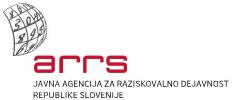Intersectoral Coordination of Problem Border Areas Development
Principal Investigator at ZRC SAZU
Janez Nared, PhD-
Original Title
Medresorsko usklajeno spodbujanje razvoja v obmejnih problemskih območjih
Project Team
Janez Nared, PhD, David Bole, PhD, Nika Razpotnik Visković, PhD, Asst. Prof. Jani Kozina, PhD, Maruša Goluža, PhD, Anja Trobec, BA, Jernej Tiran, PhD, Erik Logar, PhD, Peter Repolusk, BA, dr. Alma Zavodnik Lamovšek, UL FGG, dr. Gregor Čok, UL FGG, dr. Mojca Foški, UL FGG, dr. Gašper Mrak, UL FGG, dr. Damjan Kavaš, IER, mag. Klemen Koman, IER-
Project ID
V6-1945
-
Duration
1 November 2019–30 April 2021 -
Lead Partner
Research Centre of the Slovenian Academy of Sciences and Arts
-
Project Leader
dr. Janez Nared
-
Financial Source


Partners
University of Ljubljana, Faculty of Civil and Geodetic Engineering, Institute for Economic Research
Due to its size and geographic position, 93 out of 212 of the Slovene municipalities lie in the 10-km border belt (Pečar 2017). Majority of border areas face unfavourable natural and social conditions, such as bad accessibility, depopulation, mountainous character, various protection regimes ... Consequently, their development is marked by negative demographic trends, low level of education, lack of jobs, long-term unemployment, bad accessibility, and erosion of services of general and general economic interest that strengthens centralisation tendencies in Slovenia (Nared 2016). Consequently, 85 municipalities are defined as border problem areas by law. They cover nearly half of the Slovene territory and are settled by more than a fifth of the country's population. Its economic role is important as well. 12,2 % of companies work there employing 12,1 % of workers (data for 2013 and 2014; MGRT 2019). The scope of border areas, the share of the population, that lives there, as well as the share of companies and jobs, show the importance of border problem areas for better cohesiveness of the national territory and the competitiveness of the economy. Therefore, a comprehensive development program should be shaped, enhancing the development of border problem areas and ensuring their territorial cohesion, competitiveness, social cohesion and sustainable development in general. As mentioned by Rodriguez-Pose (2019), the wellbeing of wealthy areas strongly depends on the wellbeing of weaker areas, thus, the better policy is needed, not less or more policy.
Due to the aforementioned reasons, Slovene regional policy tends to focus on border problem areas in the new 2021–2027 financial perspective. Such focus is justified by the draft of the Slovene Spatial Development Strategy 2050, that in case of the border problem areas provides »introduction of governance and spatial measures, that are grounded in territorial dialogue, their priority treatment and identification of synergies with a coordinated set of various sectorial development measures and instruments«. Slovene Development Strategy 2030 similarly emphasizes the importance of horizontal and multi-level cooperation. Thus, the development of border problem areas strongly depends on their clear identification, typology, and definition of well-calibrated and program-based measures, that connect policies of various sectors. The main question in this relation is how to comprehensively enhance the development of border problem areas. The answer will be provided by the proposed project. The project will analyse the development of border problem areas, considering existing studies, experiences with the implementation of the regional policy in Slovenia, and by conducting questionnaire survey in Slovene municipalities, interviews with the crucial stakeholders, and workshops and focus groups. The results will be used to prepare a typology of border problem areas, as well as for the preparation of the system for inter-sectoral coordination of problem border areas development.
The project has two main objectives:
1. Typology of border problem areas.
2. Provision of guidelines for developing a program approach in enhancing the development of border
problem areas.
In addition, we will focus on specific measures for developing border areas as defined by the Slovene Spatial
Development Strategy 2050:
• Identification and analysis of governance approach for implementation of the territorial dialogue among
crucial stakeholders.
• Analysis and elaboration of tailored sectorial normatives for specific sectors (e.g. primary schools,
kindergartens, health care).
• Testing the capacity of stakeholders for implementing the policies.
• Identification and analysis of key business models.
• Analysis of alternative sustainable mobility models.
• Decrease of daily mobility to neighbouring countries and in the inner part of the country and thus
contributing to environmental objectives, the better quality of life and higher social standard in the field of
health care, education and culture.
The project will contain the following work packages:
WP1: Project management (ZRC SAZU):
1.1 Project management
1.2 Reporting
WP2: Dissemination (ZRC SAZU)
2.1 Scientific dissemination (monograph, papers)
2.2 Public debate
WP3: Capitalisation, analysis and typology (FGG)
3.1 Capitalisation of existing studies
3.2 Analysis of primary sources (questionnaire, interviews, workshops, focus groups)
3.3 Typology of border problem areas
WS4: Elaboration of a system for inter-sectoral coordination of problem border areas development (IER)
4.1 Analysis and development of a system for enhancing the development of border problem areas
4.2 Preparing a program approach for enhancing the development of border problem areas
4.3 Instruments for enhancing the development of border problem areas.